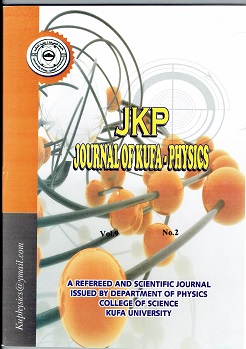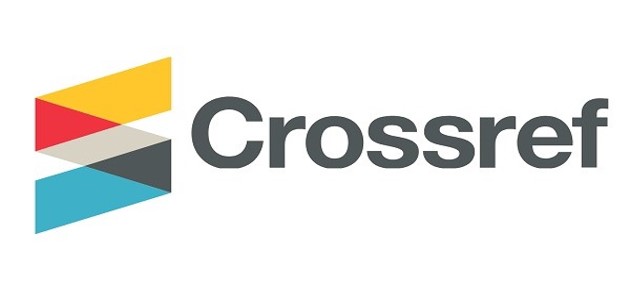Fabrication of Zn/ZnO Core/Shell Nanoparticles by Laser Ablation in Liquid Technique
DOI:
https://doi.org/10.31257/2018/JKP/2022/140105Keywords:
Pulsed laser ablation, Zn/ZnO NPs, Core/Shell NPsAbstract
In this research, Zn/ZnO Nanoparticles (NPs) were prepared via the Pulse Laser Ablation (PLA) method using three liquids (Ethanol, Acetone, and Distilled Water). Zn/ZnO NPs were synthesized via an Nd-YAG laser with a wavelength of 1064 nm, applied energy of 800 mJ, a frequency of 6 Hz, and 100 laser pulses at room temperature. The Zn metal plate was dipped in Ethanol, Acetone, and Distilled Water, respectively. The UV-Vis results shows sharp and single peaks at 320, 341, and 333 nm for Zn/ZnO NPs in Ethanol, Acetone, and Distilled Water respectively. FTIR testing shows peaks at about 500 cm−1 for Zn/ZnO NPs in Ethanol, Acetone, and Distilled Water, which indicates Zn-O stretching vibrations. XRD investigation shows low-angle peaks at 23.31˚, 23.81˚, and 19.20˚ for Zn/ZnO NPs in Ethanol, Acetone, and Distilled Water, respectively. In addition, a sharp peak of high intensity was observed at 13.54˚ for Zn/ZnO Core/Shell NPs in Acetone. These peaks indicate that the structure is stable and undistorted. These patterns emphasize compact pore arrangements. The lower intensity of the gradient peaks indicates that ZnO formed at a preferred site. Nor did high-angle XRD patterns appear, indicating that the formed ZnO NPs are so small to be distinct from background noise or undetectable by widish angle XRD. The broad XRD peak at 2θ angles from 20° to 30° can also confirm that ZnO is low-crystalline. The TEM images show the presence of Zn/ZnO NPs in Ethanol, Acetone, and Distilled Water with a size of less than 50 nm, and TEM analysis confirms that the primary structure of Zn/ZnO NPs is a Core/Shell.
Downloads
Downloads
Published
How to Cite
Issue
Section
Categories
License
Copyright (c) 2023 Mustafa Raad Taher, Abbas M. Ali Al-Kifaie

This work is licensed under a Creative Commons Attribution 4.0 International License.
Journal of Kufa-Physics is licensed under the Creative Commons Attribution 4.0 International License, which allows users to copy, to create extracts, abstracts, and new works from the Article, to alter and revise the Article, and to make commercial use of the Article (including reuse and/or resale of the Article by commercial entities), provided the user gives appropriate credit (with a link to the formal publication through the relevant DOI), provides a link to the license, indicates if changes were made and the licensor is not represented as endorsing the use made of the work. The authors hold the copyright for their published work on the JKP website, while KJP is responsible for appreciating citation for their work, which is released under CC-BY-4.0 enabling the unrestricted use, distribution, and reproduction of an article in any medium, provided that the original work is properly cited.













